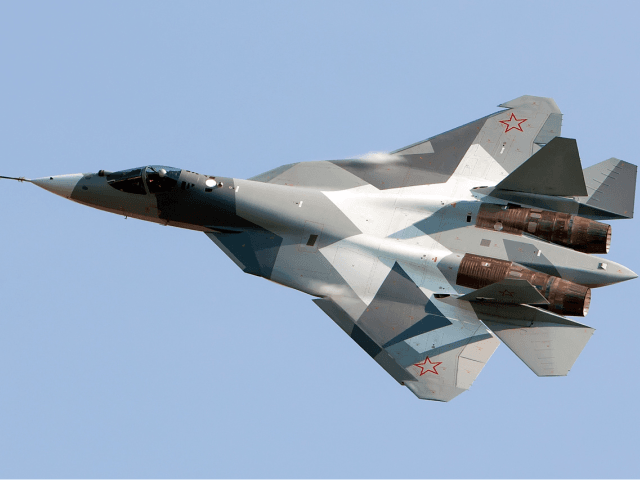A Pentagon spokesman on Thursday questioned reports that Russia has deployed advanced stealth fighter jets to Syria, saying the U.S. military could not confirm their presence and that “deconfliction” strategy for the U.S. coalition would not change in any event.
“The addition of fifth-generation fighters into Syria would certainly not be in keeping with Russia’s announced force drawdown,” said Defense Department spokesman Eric Pahon.
“We do not consider these jets to be a threat to our operations in Syria, and will continue to deconflict operations as necessary,” he promised, calling upon all parties to “remain focused on defeating [Islamic State] ISIS, de-escalating and resolving the Syrian conflict, and protecting innocent civilians.”
As Pahon pointed out, stealth fighters would hardly be consistent with Russia’s stated commitment to de-escalation, and they would also have little to do with defeating ISIS, or even the rebel factions still fighting against the regime of dictator Bashar Assad. The list of adversaries Russia would need Su-57 fighters to combat is uncomfortably short.
The Su-57 is essentially Russia’s answer to the American F-22 Raptor and F-35 Joint Strike Fighter. Most analysts believe it probably is not the equal of those planes—even when and if Russia gets all the bugs worked out—but it poses a real threat to them, and it’s not as though the Islamic State or al-Qaeda has been fielding an air force that needs to be shot down.
On Wednesday, video surfaced of what appears to be two Su-57s landing at Khmeimim Air Base in Syria:
Russia deployed two Su-57 (PAK FA/T-50) 5th generation stealth prototypes February 21 to #Hmeymim airbase in Syria for weapon system testing. pic.twitter.com/UTLEmQQw3H
— Military Advisor (@miladvisor) February 22, 2018
As Popular Mechanics pointed out, skepticism of such reports from the chaos of Syria is appropriate, but further eyewitness accounts and video clips developed confidence that the Su-57 report was real.
The most benign explanation for moving these planes to Syria is that Russia wants to test their capabilities and improve the notoriously troublesome fighters, as it has done with other weapons systems during its intervention on behalf of the Assad regime.
It seems odd for the Russians to deploy valuable prototypes to a conflict where they face a high risk of sabotage, damage on the ground from rebel artillery, or getting shot down by rebel anti-aircraft systems, not to mention the United States getting a closer look at the planes than Russian military planners would like. However, the National Interest notes that Russia has a preference for earlier battlefield testing than the U.S. and its allies.
Moscow may also be putting on a show of strength, signaling that it’s not intimidated by the superior American fighters in the theater, or even sending a message that it has the option of escalating the next encounter between U.S. and Russian planes. Russian pilots have not exactly been saluted for their discipline and professionalism in recent encounters.
Popular Mechanics tells the tale of one such encounter from last year:
American Raptors have proved decisive in at least one encounter: in late 2017, a F-22 Raptor launched anti-missile chaff and flares near two Russian Su-25 ground attack jets that had intruded on American-controlled airspace. The Russian Air Force scrambled a Su-35 fighter in response. The Su-35, a modernized version of the 1980s-era Su-27 Flanker, is a highly effective aircraft but lacks stealth and is not a fifth generation fighter. Raptors and Su-57s could soon fly the same airspace and be involved in the same incidents.
Russia’s Sputnik News quoted a lawmaker who was coy about confirming the deployment of Su-57s to Syria, but said if they have been deployed, they would be sending a “political message” and serving as a deterrent against “aircraft from neighboring states which periodically fly into Syria” without properly requesting permission from the Assad government.
Retired Russian Col.-Gen. Nikolai Antoshkin implied that the United States is already scaling back F-22 flights in Syria because the American military is worried about provoking a confrontation with the Russian stealth fighter. Other Russian analysts suggested Moscow sent the planes to put on a little air show for potential buyers, some of whom have been growing skeptical of the Su-57 project’s viability.
Speculation over the stealth fighter deployment should not be a distraction from the troubling fact that Russia recently dispatched a fairly large contingent of fighters and ground attack aircraft to Syria, a deployment highly inconsistent with “deconfliction” or “drawdown” strategies.

COMMENTS
Please let us know if you're having issues with commenting.